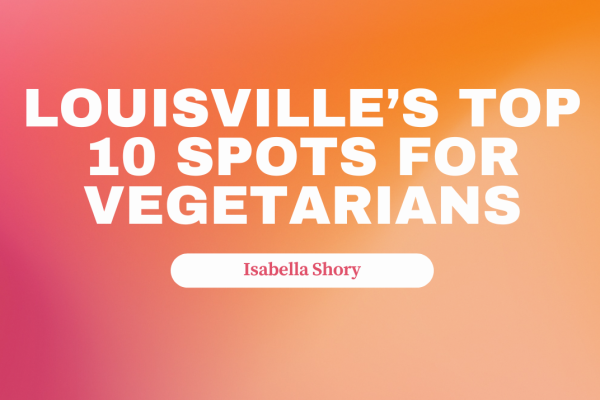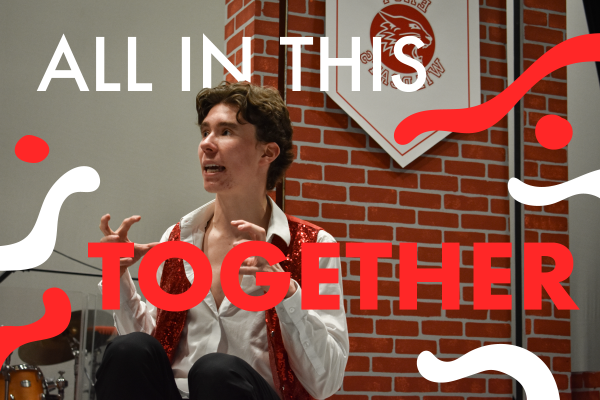The Final Straw
You’re concerned about the straw, but forget about the cup.
Straws suck. While using a straw could help make drinking an iced coffee a little more enjoyable, the reality is: most people don’t need them. We can’t completely get rid of them because they are necessary for the elderly and disabled, but they are a luxury for the rest of the population. People are beginning to realize this around the world, with companies like Starbucks and Disney completely banning straws. What Mickey Mouse and the gang don’t realize is that the problem is a lot bigger than straws.
Straws make up about 4 percent of plastic waste. That’s not a lot compared to the 91 percent of plastic waste that isn’t recycled each year — waste that goes from coffee shop trash cans to the Ohio River to the ocean. Justin Mog, a sustainability coordinator at the University of Louisville had a few thoughts about the issue.
“It frustrates me when people get all in a tizzy about something like straws because the crisis is so much bigger than that,” he said, throwing his hands in the air.
In Louisville and around the world, that crisis includes tons of wasteful plastic that goes into the ocean. According to the World Economic Forum, the equivalent of a garbage truck full of plastic enters our oceans every minute, and it’s expected to increase to two garbage trucks by 2030.
“I’m excited that Kroger has committed to getting rid of their disposable plastic bags, but they’re not going to do it until 2025 for crying out loud,” Mog said.
The problem is much bigger than just straws and coffee cups. The next time Urban Outfitters has a sale on sweaters, you might want to think twice about spending your cash on one. Plastic is even in our clothing. When you wash fleece, it throws off little bits of plastic that go down the drain and eventually into our ocean.
So, plastic is everywhere. It’s in our clothes, around our coffee, and in our waterways. Straws are just a tiny portion of that waste. The straw ban may feel like it’s helping, but it’s merely scratching the surface of the plastic waste problem.
“Maybe straws will help us get there. I just hope we don’t get overly focused on one thing as if that’s going to be the ‘silver bullet’ to solve all our problems,” Mog said.
Banning straws isn’t going to save the world. Straws aren’t even the biggest perpetrators of ocean plastic waste. If you opened Facebook over the summer, the video of a straw stuck in a turtle’s nose was plastered all over the trending page, but it didn’t feature the newest jellyfish of the sea: plastic bags. Marine life who feed on jellyfish get confused by the thin plastic bag and mistake it for their food.
Okay, so we limit all single-use plastic items, that should solve everything, right? But when you look at the bigger picture, even that would just be a baby step in this marathon of living sustainably.
This process of living sustainably includes a number of different things, but the “three Rs” are a place to start.
We hear “reduce, reuse, recycle” every single Earth Day, but what do these terms really mean? According to the National Institute of Environmental Health sciences, reducing is making something smaller or using less waste. Source reduction is a more specific definition, which is reducing the amount of waste before you purchase an item, like only buying from sustainable brands. It’s the most important and effective approach to solving the problem. Reusing and recycling are important, but they only deal with waste after it’s been produced.
The production of plastic creates so many harmful gasses alone, adding to the obvious plastic waste. Then, the product has to be shipped over a long distance, using lots of fuel that pollute the air more.
Major lifestyle changes are necessary to solve the waste problem. Just like any part of living sustainably, you can’t just change one part and expect everything to fall in line.
In my experience, it’s intimidating. I saw people online that have gone “zero-waste” and keep all of their trash in a mason jar and it made me feel like my efforts didn’t matter. The only way I could make the tiniest bit of difference would be to go to the extreme. But I took a step back and realized that to achieve sustainability, I had to change the way I lived my life. Maybe I wouldn’t have to go zero-waste, but I could start somewhere.
So I did.
If you look in my lunchbox, you’ll see these little pouches that look like they’re for pencils. They’re actually reusable food bags that are insulated inside. Since I bring my lunch everyday, I eliminated one source of wasteful plastic from my life. I’m repeating this process for each aspect of my life, from getting food after school to shopping for new clothes. I’m not perfect — I accidentally get a straw for my drink every once in a while — but I’m working towards it. Being zero-waste is really hard, so I don’t expect myself to achieve it without hard work.
It’s all about stopping plastic at the source. Banning straws is reducing plastic, but it shouldn’t be the final step. This problem is getting out of hand very quickly. Single-use plastic items are unnecessary and damaging to the environment, both when they’re made and after they’ve been used.
If we took considerable steps towards sustainability, how different would our world look? Using straws isn’t the end of the world, but plastic waste in its entirety very well could be. While starting small can make a difference, it takes change on a global scale to really make a dent. Taking small strides like replacing single-use items with reusable ones, reducing plastic waste, and biking instead of driving are just a few ways we can potentially make our earth a little better for generations to come.
Donations are collected through The Publishers, duPont Manual High School's booster club for J&C. On The Record relies completely on sponsorships, advertisements, and donations to produce and distribute each issue. Please consider donating to our cause, and helping the student journalists of OTR amplify youth voices for years to come.






